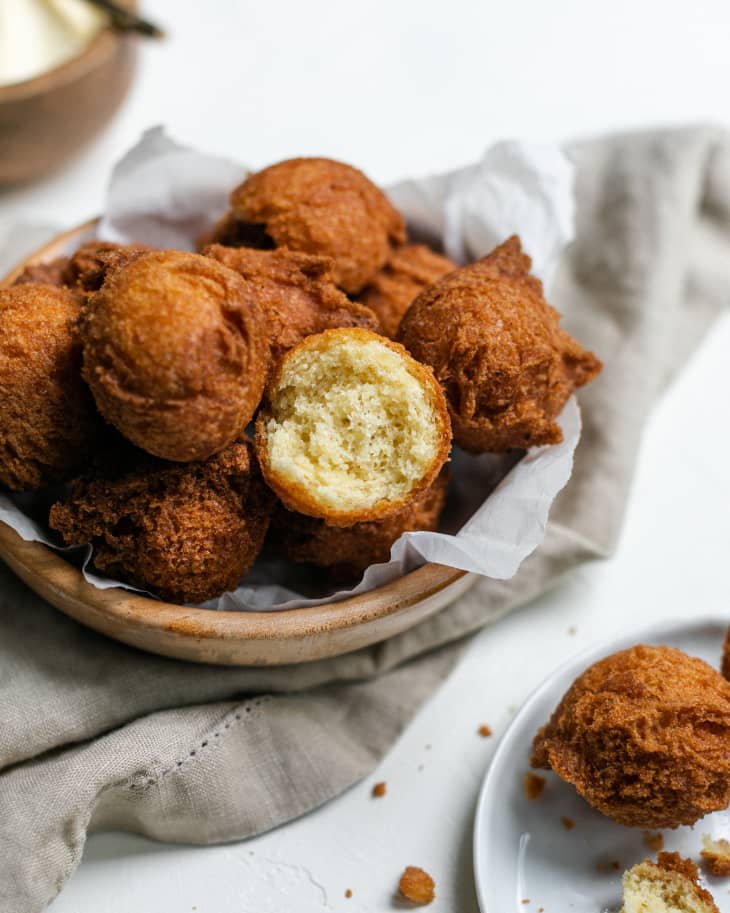Sheldon Simeon’s Andagi Are Two-Bite Doughnut Perfection

These doughnuts are leavened with baking powder rather than yeast, so they’re more like crunchy-shelled cake donuts rather than puffy malasadas. Serve them when they're hot and fresh.
Makes4 dozen doughnuts
Most people outside of Hawai‘i know of malasadas, but Hawai‘i’s other beloved fried dough, andagi, also deserves recognition. Whereas malasadas are usually yeast-based, andagi are leavened with baking powder — they’re more like crunchy-shelled cake donuts rather than puffy malasadas. Andagi came to the islands via Okinawan laborers, who first arrived in Hawai‘i in 1900. Today, the annual Okinawan Festival is one of the largest cultural festivals in the state, frying up somewhere around 70,000 andagi. (There’s even an anda-dog, an Okinawan version of a corndog).
Andagi are also a favorite treat at okazuya, old-school Japanese delis, which are among the most nostalgic of Hawai‘i’s eateries. But making them at home means you can have them year-round and hot and fresh, when they’re at their best.
Sheldon Simeon's Andagi (Okinawan Doughnuts)
These doughnuts are leavened with baking powder rather than yeast, so they’re more like crunchy-shelled cake donuts rather than puffy malasadas. Serve them when they're hot and fresh.
Makes 4 dozen doughnuts
Nutritional Info
Ingredients
- 2 cups
white sugar
- 4
eggs
- 3/4 cup
whole milk
- 3/4 teaspoon
vanilla extract
- 4 cups
flour
- 3 1/2 tablespoons
baking powder
- 1/4 teaspoon
salt
Oil for deep frying
Instructions
In a large bowl, whisk together sugar, eggs, milk, and vanilla extract. In a separate bowl sift flour, baking powder, and salt together. Add dry ingredients to egg mixture. Stir until dry ingredients are moistened and smooth. Do not over-mix.
Prepare a wire rack or line a baking sheet with paper towels. Fill a large, heavy-bottomed pot or Dutch oven with at least 2 inches of oil, making sure to leave a few inches of clearance from the top of the pot. Heat over medium-high heat until the oil reaches 350°F (use a thermometer), adjusting the heat as needed to maintain temperature.
Drop teaspoonfuls of dough into the hot oil. Fry doughnuts in batches, making sure there is plenty of room for them to move in the oil, until golden-brown and crispy, 4 to 5 minutes. Transfer the andagi to a wire rack or a paper-towel lined plate and let cool slightly before serving.
This recipe is part of our weeknight Hawaiian cooking guide, designed to bring the vibrant and colorful cuisine of Hawaii into your kitchen. Head to the intro piece to read more from Sheldon, and check out all of the recipes below.
